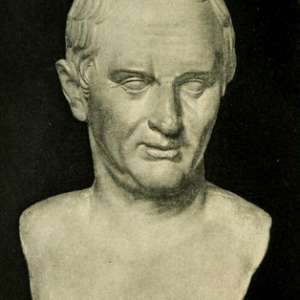
Daniel Tammet is an autistic savant with extraordinary mental abilities, including the ability to perform complex mathematical calculations at incredible speeds and to recall pi to 22,514 decimal places. He is also able to describe how he performs these feats, something that most savants are unable to do. Tammet is able to see numbers as shapes, colors, and textures, and is able to visualize the process of multiplication as the evolution and transformation of two shapes into a third, which represents the answer. He is able to do this without conscious thought, using what he calls "mental imagery."
Tammet is one of an estimated 10% of individuals with autism who have savant abilities, and an estimated 1% of non-autistic individuals. However, the exact cause of savant abilities is not known. Some scientists, such as Professor Allan Snyder of the Centre for the Mind at the Australian National University, believe that these abilities are present in all individuals, but that savants have simply learned how to access them due to brain damage or other neurological conditions. Snyder believes that studying individuals like Tammet could be very instructive in understanding how to access these abilities in non-autistic individuals.
Scans of the brains of autistic savants have shown that the right hemisphere may be compensating for damage in the left hemisphere, leading to the development of exceptional skills in areas such as mathematics and memory, which are typically associated with the right hemisphere. While many savants struggle with language and comprehension, which are primarily left hemisphere skills, Tammet has an exceptional vocabulary and is even in the process of creating his own language, called "Mänti," which reflects the relationships between different things.
Professor Simon Baron-Cohen, director of the Autism Research Centre at Cambridge University, is interested in the possible insights that Mänti could provide into savant ability. He believes that savants may have a particular type of brain organization that allows them to excel in certain areas, but that this may come at the cost of difficulty in other areas, such as social interaction and communication. Baron-Cohen and his colleagues at the ARC are currently studying the brain organization of savants in order to better understand these abilities and how they might be applied to non-autistic individuals.
Other researchers, such as Professor Darold Treffert of the University of Wisconsin, believe that savant abilities may be the result of a unique combination of genetics and environmental factors. Treffert has studied more than 500 savants over the course of his career and has identified a number of common characteristics, including an intense focus on a particular interest or subject and an exceptional memory for details related to that interest. He has also found that savants often have an "island of genius," a specific area of expertise or ability that stands out in contrast to more general impairment.
Flo and Kay Lyman are a prime example of this "island of genius." These identical twin sisters are autistic savant with extraordinary memories and a particular focus on pop music and their favorite celebrity, Dick Clark. They are able to memorize every question and answer from every episode of their favorite game show, as well as the appearance of the host, and have an almost encyclopedic knowledge of musicians and album release dates. They are also able to compute the day of the week for any date, past or present, and can remember the weather and even what they ate for breakfast on any given day of their lives.
Flo and Kay are two of a kind, with their abilities and disabilities being as identical as their appearance. They are also quite rare, as they are female (more males than females are diagnosed with autism) and are prodigious savants (the highest level of savant ability). Despite their exceptional abilities Tammet is a "savant," an individual with an extraordinary mental ability. An estimated 10% of the autistic population - and an estimated 1% of the non-autistic population - have savant abilities, but no one knows exactly why. A number of scientists now hope that Tammet might help us to understand better. Professor Allan Snyder, from the Centre for the Mind at the Australian National University in Canberra, explains why Tammet is of particular, and international, scientific interest. "Savants can't usually tell us how they do what they do," says Snyder. "It just comes to them. Daniel can. He describes what he sees in his head. That's why he's exciting. He could be the Rosetta Stone."
There are many theories about savants. Snyder, for instance, believes that we all possess the savant's extraordinary abilities - it is just a question of us learning how to access them. "Savants have usually had some kind of brain damage. Whether it's an onset of dementia later in life, a blow to the head or, in the case of Daniel, an epileptic fit. And it's that brain damage which creates the savant. I think that it's possible for a perfectly normal person to have access to these abilities, so working with Daniel could be very instructive."
Scans of the brains of autistic savants suggest that the right hemisphere might be compensating for damage in the left hemisphere. While many savants struggle with language and comprehension (skills associated primarily with the left hemisphere), they often have amazing skills in mathematics and memory (primarily right hemisphere skills). Typically, savants have a limited vocabulary, but there is nothing limited about Tammet's vocabulary.
Tammet is creating his own language, strongly influenced by the vowel and image-rich languages of northern Europe. (He already speaks French, German, Spanish, Lithuanian, Icelandic and Esperanto.) The vocabulary of his language - "Mänti", meaning a type of tree - reflects the relationships between different things. The word "ema", for instance, translates as "mother", and "ela" is what a mother creates: "life". "Päike" is "sun", and "päive" is what the sun creates: "day". Tammet hopes to launch Mänti in academic circles later this year, his own personal exploration of the power of words and their inter-relationship.
Professor Simon Baron-Cohen, director of the Autism Research Centre (ARC) at Cambridge University, is interested in what Mänti might teach us about savant ability. "I know of other savants who also speak a lot of languages," says Baron-Cohen. "But it's rare for them to be able to reflect on the nature of language as Daniel does. It's interesting to see how Daniel is using language as a way of making connections between different ideas. We know that savants are very good at categorising, and this is an example of that."
It is possible that Tammet's ability to see the relationships between different things is a key to his savant ability. Many savants are excellent at categorising and classifying. Baron-Cohen explains: "We have a theory that savants have an enhanced ability to do something that we all do, called 'systemising'. It's the drive to analyse and explore systems. Systems can be simple, like a toaster, or complex, like a human being. Savants are very good at systemising, and they tend to be attracted to systems that are logical. Daniel's ability to see relationships between different things might be an example of this."
Tammet's savant ability might also be related to his ability to use his mental imagery to perform mathematical calculations. Snyder believes that savant abilities are related to the ability to access the unconscious mind. "The unconscious mind is capable of making connections that the conscious mind is not," he says. "It can take a lot of information and process it at a much faster rate. The savant is able to tap into this unconscious mind and make connections that others can't. It's like a sixth sense."
This theory is supported by research on the brain activity of savants. Studies have shown that savants have abnormal brain activity in the right hemisphere, which is responsible for spatial skills and mental imagery. This suggests that their exceptional abilities may be related to the way they use their mental imagery to process information.
In addition to their exceptional abilities, savants also often have significant disabilities. Many have problems with social interactions, communication, and self-care. Tammet, for instance, has difficulty with some basic life skills, such as driving a car or wiring a plug. These disabilities can make it challenging for savants to lead independent lives, and they often require support from caregivers.
Despite their challenges, savants can achieve great success and make important contributions to society. For example, Stephen Wiltshire, an artist with autism, is renowned for his detailed, accurate drawings of cities and landscapes from memory. Kim Peek, the inspiration for the character of Rain Man, had an exceptional memory and was able to recall vast amounts of information from books and other sources. And Daniel Tammet's unique perspective and savant abilities have allowed him to make important contributions to the fields of mathematics and linguistics.
In conclusion, the lives and abilities of savants like Flo and Kay Lyman, Stephen Wiltshire, and Daniel Tammet demonstrate the potential for individuals with autism to achieve greatness and make valuable contributions to society. While they may face challenges and limitations, their exceptional talents and abilities allow them to overcome these obstacles and excel in their respective fields. Further understanding and research into savant syndrome and autism can help us to unlock the full potential of individuals with these conditions and enable them to reach their full potential.













































